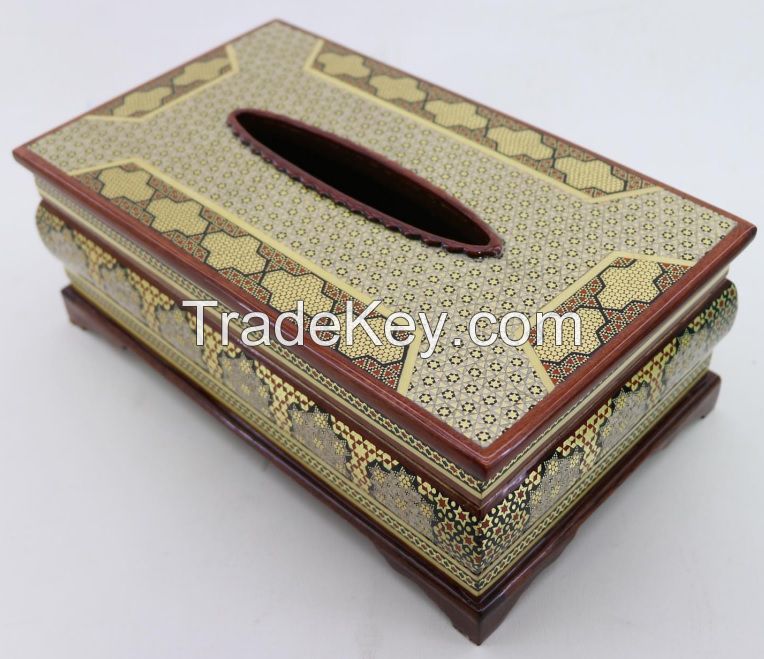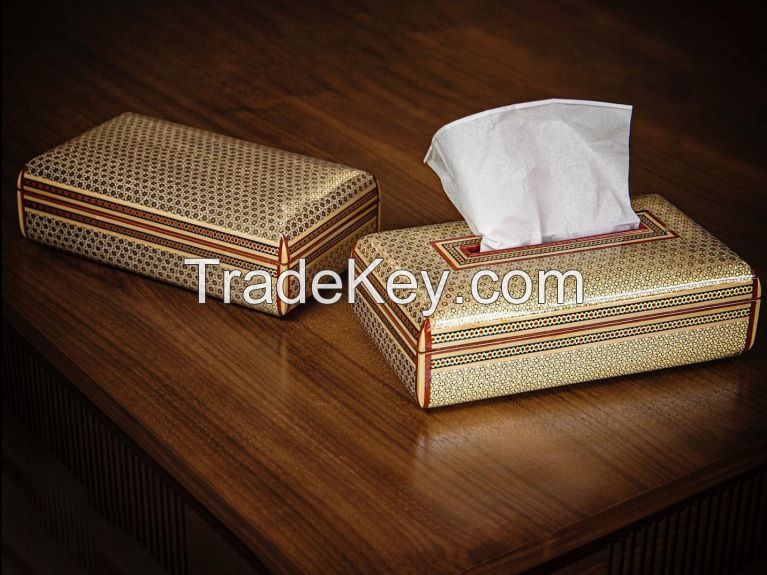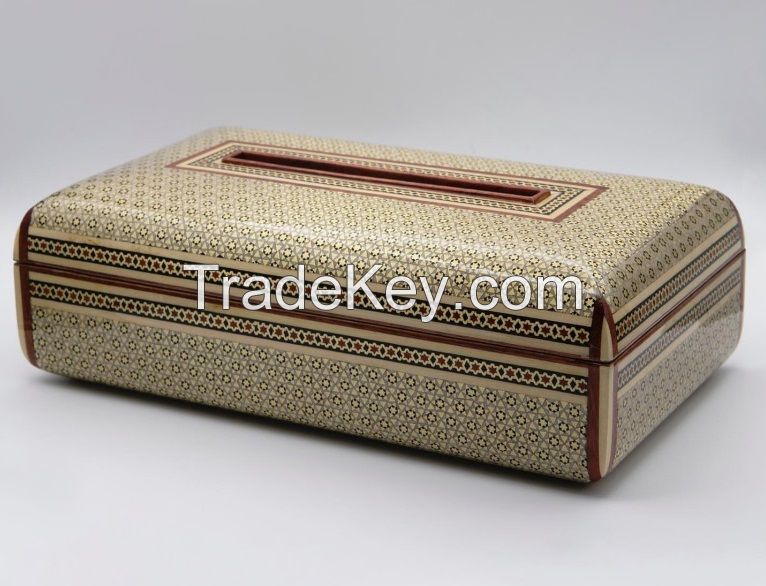Product Description
Tissue Box
Tissue box decorated with Khatam
layers and Tazhib paintings.
An introduction to
Khatam (Khatam-kari)
Khatam or Khatam-kari art is an
ancient Persian technique of inlaying. In fact, it is a special
type of Marquetry. In this art the surfaces of objects are
decorated with very small triangles. Khatams various designs have
always been in the form of regular geometric shapes. These
geometric shapes are made by placing small triangles next to each
other. These triangles are made of wood, metal, bone and oyster.
The smaller and more delicate the triangles, the better the inlay.
In an inlay design, at least three triangles are used to make the
smallest geometric unit and up to four hundred triangles for the
largest. Inlaying is done on both wooden and metal objects,
especially copper.
How are Khatam-kari products
made?
To make the khatam layers, first thin
strips with a maximum thickness of 1.5 mm are made of wood, metal
and bone. Prismatic wires are made of these strips during a special
process. Then, by putting these wires together and gluing them with
a special glue and finally pressing them, geometric volumes called
Ghame are made. By changing the order of prismatic wires next to
each other, different designs and patterns of Ghame will be
obtained. Next, an inlay layer is obtained by cutting thin layers
with a thickness of 1 to 1.5 mm from the made Ghameh. The inlay
artist creates a custom design by using a combination of inlay
layers and pasting them on the desired surface.
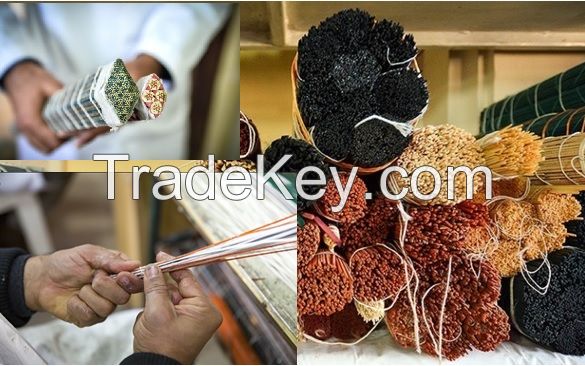
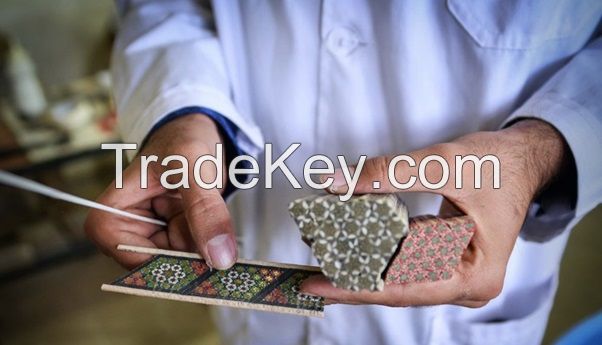
Materials used in Khatam-kari
work
-Types of wood: ebony, walnut and betel wood are used for black and
brown colors, logwood and jujube for red and orange colors, maple
and boxtree for yellow and cream colors, alder and sycamore for
green and orange colors.
-Types of metals: silver, gold, brass, copper and aluminum
-Types of bones: elephant bone and ivory, camel bone, horse
bone
Oysters: to create a glossy white color
-Special adhesives
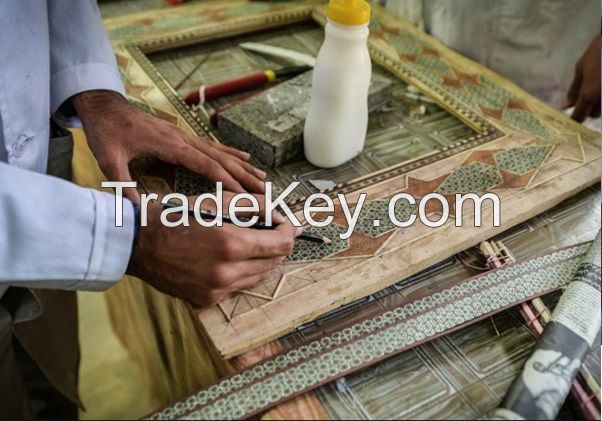
Quality
criteria for Khatam-kari products
Uniformity of colors and materials used in making the inlay
No change in color and shape over time
Restorations and patties are Unnoticeable in the final surface of
work
Symmetry of all shapes at the work surface and angles and sides
The smaller the patterns and triangles, the higher the quality and
value of the work
Proper coverage by protective layers against moisture and also to
polishing the work
| Country: |
India |
| Model No: |
-
|
| FOB Price: |
(Negotiable)
Get Latest Price
|
| Place of Origin: |
- |
| Price for Minimum Order: |
- |
| Minimum Order Quantity: |
- |
| Packaging Detail: |
- |
| Delivery Time: |
- |
| Supplying Ability: |
- |
| Payment Type: |
- |
| Product Group : |
- |
